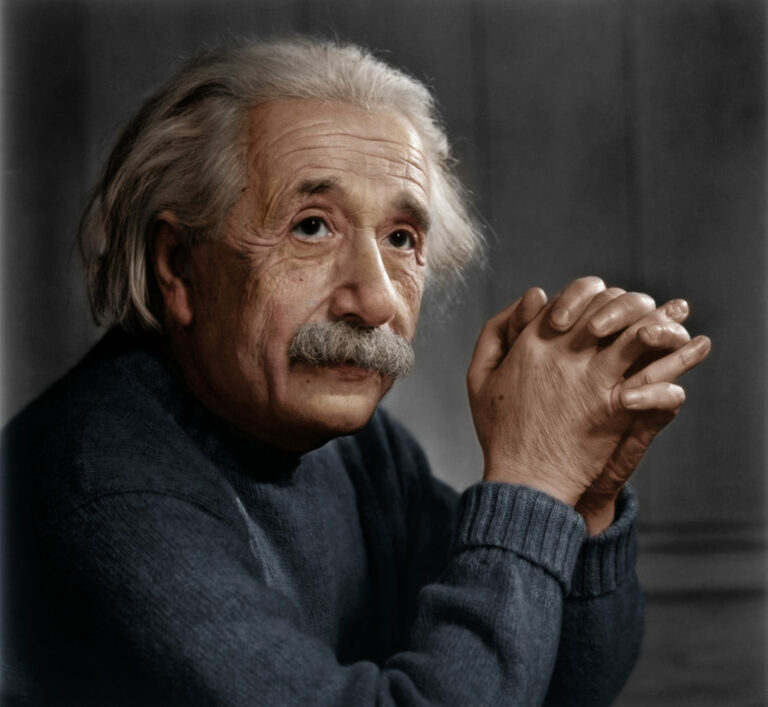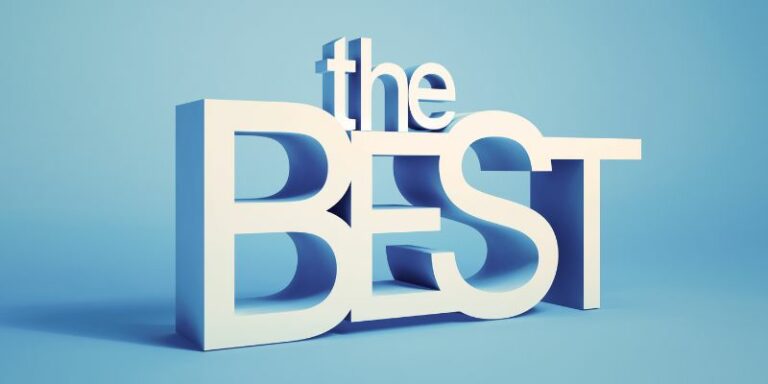Toy Car Brands: A Comprehensive Guide to Miniature Motoring Marvels
Toy Car Brands: A Comprehensive Guide to Miniature Motoring Marvels cars.truckstrend.com
From the simplest push-along vehicle that sparks a toddler’s first imaginative journey to the meticulously crafted die-cast replica coveted by adult collectors, toy cars have held a universal appeal for generations. More than just playthings, these miniature vehicles represent a fascinating intersection of engineering, design, and dreams. But beneath the shiny paint and rolling wheels lies a complex world shaped by diverse manufacturers – the Toy Car Brands.
Understanding these brands is crucial, whether you’re a parent seeking a safe and engaging toy for your child, a budding hobbyist looking for performance and customization, or a serious collector hunting for the next valuable addition. Each brand carries its own legacy, specializes in certain types of vehicles, and caters to specific needs, influencing everything from durability and detail to safety and collectibility. This comprehensive guide will navigate the exciting landscape of toy car brands, offering insights into their categories, key considerations, and practical advice for navigating this miniature motoring universe.
Toy Car Brands: A Comprehensive Guide to Miniature Motoring Marvels
The Enduring Appeal of Toy Cars: More Than Just Play
The allure of toy cars transcends mere entertainment. For children, they are powerful tools for development. Pushing a car across the floor refines fine motor skills and hand-eye coordination. Imagining thrilling races or rescue missions fosters creativity, storytelling abilities, and spatial reasoning. Toy cars also offer a safe way to understand the mechanics of movement, speed, and the world around them.
For adults, the appeal often lies in nostalgia, harking back to cherished childhood memories. Beyond that, the intricate detail and historical accuracy of many modern toy cars make them desirable collector’s items. They offer a tangible connection to automotive history, allowing enthusiasts to own scaled-down versions of iconic vehicles they might never possess in real life. The evolution of toy car brands reflects this diverse appeal, constantly innovating to meet the demands of both playtime and display.
Key Categories of Toy Car Brands
The world of toy cars is vast, but it can broadly be categorized by type and purpose, with specific brands dominating each niche.
1. Die-Cast Models: The Miniatures of Automotive Art
Die-cast cars are perhaps the most iconic and widely recognized type of toy car. Made by pouring molten metal (usually zinc alloy) into a mold, these cars are known for their durability, weight, and often impressive detail. They come in various scales, with 1:64 being the most common for play and 1:18, 1:24, and 1:43 popular among collectors.
-
Major Players:
- Hot Wheels: A household name, known for its vibrant designs, fantasy cars, and extensive track systems. Hot Wheels cars are highly collectible, with "Treasure Hunts" and "Super Treasure Hunts" driving fervent collector activity. They offer a fantastic blend of playability and collectibility.
- Matchbox: Often seen as a more realistic counterpart to Hot Wheels, Matchbox focuses on authentic replicas of everyday vehicles, emergency services, and construction machinery. They emphasize realism and durability, making them excellent for imaginative play.
- Maisto & Bburago: These brands specialize in larger scale die-cast models (1:24, 1:18), offering impressive detail for their price point. They are popular among those looking for display models without the premium cost of high-end collector brands.
- Tomica: A Japanese brand renowned for its high quality, working suspension, and realistic representations of Japanese and international vehicles. Tomica cars are highly detailed for their small size and are very popular among collectors worldwide.
- High-End Collector Brands (e.g., AUTOart, Minichamps, Kyosho): These brands produce exquisite, highly detailed, and often limited-edition models primarily for display. They feature opening parts, intricate interiors, and precise paint finishes, commanding premium prices.
-
Benefits: Durability, collectibility, wide variety of models (from fantasy to hyper-realistic), compact size for storage.
-
Considerations: Scale (ensure compatibility if buying for playsets), rarity can drive up prices, some smaller parts may not be suitable for very young children.

2. RC (Remote Control) Cars: The Thrill of Control
RC cars bring an interactive dimension to toy motoring, allowing users to control their vehicles remotely. They range from simple, child-friendly models to sophisticated, high-performance hobby-grade machines capable of incredible speeds and off-road prowess.
-
Major Players:
- Traxxas: A leader in hobby-grade RC, known for its speed, durability, and extensive range of parts for customization and repair. Traxxas offers everything from monster trucks to short course trucks, popular with enthusiasts for racing and "bashing."
- ARRMA: Another prominent hobby-grade brand, celebrated for its robust build quality and extreme durability, making its vehicles perfect for aggressive off-road driving and stunts.
- Redcat Racing: Offers a good balance of performance and affordability, making it a popular choice for those entering the hobby. They have a diverse range of vehicles, including crawlers, drift cars, and monster trucks.
- Kyosho: A Japanese brand known for its high-quality, precision-engineered RC models, including both on-road and off-road vehicles. They cater to a more experienced hobbyist audience.
- Nikko & Maisto RC: Often found in toy stores, these brands offer more accessible, ready-to-run RC cars for younger children and beginners, focusing on simpler controls and rugged construction.
-
Benefits: Interactive play, development of coordination and spatial awareness, potential for customization and upgrading, thrilling speeds.
-
Considerations: Battery life, charging time, maintenance requirements (especially for hobby-grade), learning curve for advanced models, outdoor space often required.
3. Building Block Cars: Engineering and Creativity Combined
Brands that offer buildable car kits provide a unique blend of construction and play. These sets allow users to assemble detailed car models piece by piece, fostering problem-solving skills and creativity.
-
Major Players:
- LEGO (Technic & Speed Champions): LEGO’s Technic line offers complex, functional models with working steering, suspension, and gearboxes, appealing to older children and adults. The Speed Champions line provides realistic, minifigure-scale replicas of iconic sports cars and race cars, focusing on authentic design.
- Mega Construx (e.g., Hot Wheels sets): Offers buildable versions of popular car brands, sometimes with unique features or compatibility with other toy lines.
-
Benefits: Develops fine motor skills, spatial reasoning, patience, and following instructions; provides a sense of accomplishment; models can be played with or displayed.
-
Considerations: Assembly time can be significant, many small pieces (choking hazard for young children), price often correlated with piece count.
4. Push-Along and Playset Cars: Early Childhood Explorers
These cars are designed for younger children, prioritizing safety, durability, and ease of use. They often feature chunky designs, no small parts, and sometimes incorporate lights, sounds, or interactive elements.
-
Major Players:
- Fisher-Price: A leader in infant and toddler toys, Fisher-Price cars are large, robust, and designed for small hands. They often come with figures or are part of larger playsets that encourage imaginative scenarios.
- VTech: Integrates educational technology into its vehicles, with sounds, phrases, and light-up elements that teach colors, numbers, or vehicle sounds.
- Green Toys: Known for its eco-friendly approach, Green Toys produces durable, simple car designs made from recycled plastic, emphasizing sustainable play.
- Playmobil: While primarily known for figures and playsets, Playmobil offers a range of vehicles that integrate seamlessly into their imaginative worlds, often with opening doors and space for figures.
-
Benefits: Safe for young children, highly durable, promotes imaginative play, develops gross motor skills.
-
Considerations: Less detail, fewer moving parts compared to die-cast or RC, often simpler designs.
Important Considerations When Choosing Toy Car Brands
Selecting the right toy car brand involves more than just picking a cool-looking vehicle. Here are key factors to consider:
- Age Appropriateness & Safety: This is paramount. Ensure the toy car brand adheres to safety standards for the child’s age group. Look for non-toxic materials, absence of small, removable parts for toddlers, and durable construction to withstand rough play.
- Durability & Materials: Will the car withstand crashes and drops? Die-cast metal is generally more durable than thin plastic for sustained play. For RC cars, consider the robustness of chassis and suspension.
- Scale & Detail: For collectors, scale (e.g., 1:18, 1:64) and intricate details like opening doors, engine bays, and accurate interiors are crucial. For play, durability often outweighs hyper-realism, though a good balance can enhance imaginative play.
- Collectibility & Rarity: Some brands, like Hot Wheels and Tomica, actively cultivate collector communities with limited editions, chase cars, and variations. If collecting is a goal, research specific series and rarity levels. High-end die-cast brands are inherently collectible due to their precision and limited runs.
- Price & Budget: Toy cars range from dollar-bin finds to hundreds or even thousands of dollars. Set a budget and understand what level of detail, performance, or collectibility that budget allows.
- Licensing & Authenticity: Many brands license real car manufacturers’ designs, ensuring accurate replicas. This is important for collectors and enthusiasts who appreciate authenticity.
- Play Value vs. Display Value: Decide if the primary purpose is active play, where durability and features like tracks are important, or display, where detail, finish, and presentation are key.
Tips for Building a Toy Car Collection or Play Set
Whether you’re starting a personal collection or curating a fleet for a child, a thoughtful approach can enhance the experience.
- Define Your Focus: For collectors, decide on a theme: a specific car manufacturer (e.g., Porsche, Ferrari), a type of vehicle (e.g., muscle cars, F1 cars, trucks), or a specific era. For play, consider what types of vehicles spark your child’s imagination (e.g., construction vehicles, race cars, emergency vehicles).
- Research and Learn: Understand the different scales, series, and special editions within your chosen brands. Knowledge is power, especially when identifying rare or valuable pieces.
- Prioritize Quality: While budget is a factor, investing in quality brands generally leads to more durable toys and more satisfying collector’s items.
- Consider Playsets and Accessories: For younger children, tracks, garages, and other playset accessories from brands like Hot Wheels or Matchbox can greatly enhance imaginative play.
- Proper Storage and Display: For collectors, keep original packaging if possible. Use display cases or shelves to protect models from dust and damage. For play cars, a designated bin or box helps keep them organized.
- Involve the Child: If buying for play, let the child have input. Their excitement and engagement will be higher if they’ve chosen their own vehicles.
Challenges and Solutions in the World of Toy Car Brands
Even in the seemingly simple world of toy cars, challenges can arise.
- Challenge: Counterfeits and Knock-offs: The popularity of certain brands, especially die-cast, leads to unauthorized copies.
- Solution: Always purchase from reputable retailers, authorized dealers, or trusted online marketplaces. Check for official branding, quality of packaging, and product finish. If the price seems too good to be true, it likely is.
- Challenge: Overwhelming Choice: The sheer number of brands, models, and variations can be daunting.
- Solution: Start by narrowing down your needs: Is it for play or collecting? What’s the age of the recipient? What’s your budget? Then, focus on brands that align with those criteria.
- Challenge: Maintaining Value (for Collectors): Keeping collector’s items in pristine condition can be difficult.
- Solution: Handle models carefully, especially high-detail ones. Store them away from direct sunlight, extreme temperatures, and humidity. For mint-in-package items, avoid opening or damaging the packaging.
- Challenge: Safety Concerns for Young Children: Small parts, sharp edges, or lead paint in older toys can pose risks.
- Solution: Stick to reputable brands that adhere to modern safety standards. Always check age recommendations on the packaging. Regularly inspect toys for damage that could create hazards.
Toy Car Brands: Price Table & Key Information
Please note: Prices are approximate and can vary widely based on specific model, rarity, condition, and retailer. This table provides a general guide.
| Brand Name | Category | Typical Price Range (USD) | Key Features / Notes |
|---|---|---|---|
| Hot Wheels | Die-cast (Play & Collectible) | $1 – $10 (basic mainline) | Iconic, diverse designs (fantasy & licensed), track compatibility, high collectibility (Treasure Hunts, Premiums $5-50+). |
| Matchbox | Die-cast (Play & Collectible) | $1 – $10 (basic mainline) | Realistic, everyday vehicles, durable, focus on authenticity, good for imaginative play, also collectible. |
| Maisto | Die-cast (Display & Play) | $5 – $50+ | Various scales (1:64 to 1:18), good detail for price, licensed models, often found in general retail. |
| Bburago | Die-cast (Display & Play) | $5 – $100+ | Similar to Maisto, often replicates luxury and race cars in larger scales (1:24, 1:18), good for entry-level collectors. |
| Tomica | Die-cast (Play & Collectible) | $5 – $20 (basic) | Japanese brand, high detail for small scale (1:64), working suspension, often features Japanese market cars, highly sought by collectors. |
| Traxxas | RC (Hobby-Grade) | $200 – $1000+ | High-performance, extremely durable, wide range of models (trucks, buggies, cars), extensive aftermarket support, ideal for serious hobbyists. |
| ARRMA | RC (Hobby-Grade) | $250 – $800+ | Known for "bash-ability" and extreme durability, popular for off-road fun and stunts, diverse range of powerful models. |
| Redcat Racing | RC (Beginner/Mid-Grade) | $100 – $500+ | Good entry-level to mid-range RC cars, offers variety (crawlers, trucks, drift cars), more budget-friendly than top-tier hobby brands. |
| LEGO | Building Blocks | $20 – $500+ | Technic (complex, functional models) and Speed Champions (realistic, minifigure-scale), excellent for creativity, problem-solving, and display. |
| Playmobil | Playset Cars/Vehicles | $15 – $100+ | Durable plastic vehicles, often part of larger playsets, designed for imaginative role-play with figures. |
| Fisher-Price | Toddler/Preschool Cars | $10 – $50 | Large, chunky, safe designs for young children, often with sounds and lights, focus on early development and gross motor skills. |
| Green Toys | Eco-friendly Cars | $10 – $40 | Made from 100% recycled plastic, simple, durable designs, often bright colors, focus on sustainability and safe play for toddlers. |
| AUTOart | High-End Die-cast (Collector) | $150 – $500+ | Highly detailed, precision models, often limited editions, intricate interiors and engine bays, primarily for display and serious collectors. |
| Minichamps | High-End Die-cast (Collector) | $100 – $300+ | Excellent detail, known for F1 cars and classic road cars, high quality, for serious collectors. |
Frequently Asked Questions (FAQ) About Toy Car Brands
Q1: What’s the main difference between Hot Wheels and Matchbox?
A1: Historically, Hot Wheels focused more on fantastical designs, speed, and track performance, while Matchbox emphasized realistic replicas of everyday vehicles and utility cars. Today, both brands offer a mix, but Hot Wheels often retains a more "flashy" and collectible appeal, while Matchbox maintains a slightly more realistic, functional aesthetic.
Q2: Are toy cars safe for all ages?
A2: No. Toy cars vary significantly in terms of safety features. Cars designed for toddlers (e.g., Fisher-Price, Green Toys) are large, have no small parts, and are made from non-toxic materials. Die-cast cars often have small wheels or accessories that can be choking hazards for children under three. RC cars may have exposed moving parts or batteries that require adult supervision. Always check the age recommendations on the packaging.
Q3: How do I clean my toy cars?
A3: For most plastic or die-cast cars, a damp cloth with a mild soap solution is sufficient. Avoid harsh chemicals. For collector’s items, use a soft brush or compressed air to remove dust, and a microfiber cloth for fingerprints. For RC cars, consult the manufacturer’s manual for specific cleaning and maintenance instructions, especially for motors and electronics.
Q4: What does "scale" mean in toy cars?
A4: Scale indicates the ratio of the toy car’s size to the actual vehicle’s size. For example, a 1:64 scale car is 1/64th the size of the real car. Common scales include 1:64 (Hot Wheels, Matchbox), 1:43, 1:24, and 1:18 (larger, more detailed collector models). The smaller the second number, the larger the toy car.
Q5: Are toy cars a good investment?
A5: While some rare or limited-edition toy cars (especially from brands like Hot Wheels, Tomica, or high-end die-cast) can appreciate significantly in value, most common toy cars are not designed as investments. Their value is primarily in play or display. For potential investment, look for sealed, rare, or limited-run models in pristine condition.
Q6: What’s the best toy car for a 5-year-old?
A6: For a 5-year-old, a good balance of durability and engaging features is key. Hot Wheels or Matchbox basic mainline cars are excellent for play, especially with track sets. Simple, ready-to-run RC cars (like those from Nikko or Maisto RC) can also be thrilling. Building block cars from LEGO Speed Champions can introduce them to construction and detailed models.
Q7: How do I identify rare toy cars for collecting?
A7: Research is crucial. Rare cars are often limited editions, "chase" pieces (like Hot Wheels Treasure Hunts), or variations with production errors. Look for unique paint schemes, specific wheel types, or limited production numbers. Online collector communities, price guides, and specialized forums are excellent resources for identifying rare models and understanding their value.
Conclusion
The world of toy car brands is as diverse and dynamic as the automotive industry itself. From sparking imagination in the youngest drivers to satisfying the meticulous demands of seasoned collectors, these miniature marvels offer something for everyone. Understanding the distinct characteristics and offerings of leading brands empowers consumers to make informed choices, ensuring durability, safety, and endless hours of enjoyment. Whether destined for the racetrack of a child’s bedroom or a curated display shelf, toy cars, guided by their reputable brands, continue to embody the thrill of motion, the beauty of design, and the enduring magic of play.


